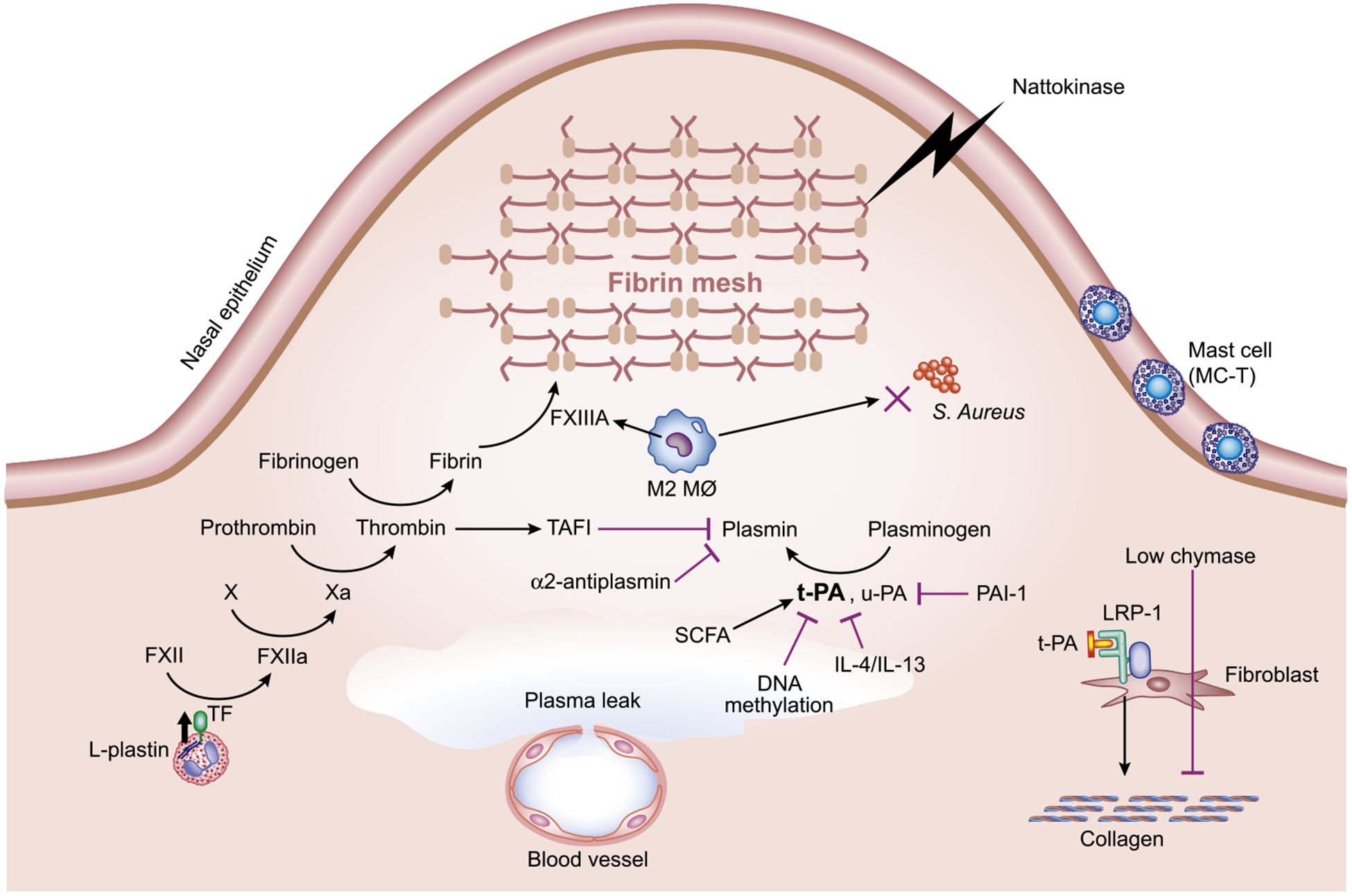FIG 3.

Hypothetical models to explain the role of coagulation and fibrinolysis in excessive fibrin deposition and low fibrosis in eosinophilic NPs. L-plastin might be involved in the translocation of TF to the eosinophil cell surface, which in turn initiates coagulation cascade and induces subsequent fibrin deposition in nasal mucosa. Increased expression of TAFI downregulates plasmin activity. Type 2 inflammation leads to the recruitment of M2 macrophages and the subsequent production of FXIII-A, which induces fibrin cross-linking. Type 2 cytokine and DNA methylation attenuates tPA expression, causing impaired plasmin generation, which in turn decreased fibrinolysis. Nattokinase shrinks NPs through strong fibrinolytic activity. SCFAs mediate tPA expression in nasal epithelial cells.
